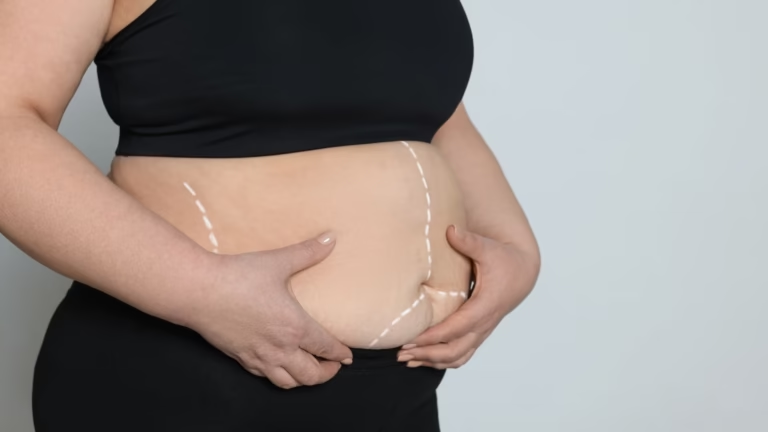
Obesity Hypoventilation Syndrome (OHS): Causes, Symptoms, and Treatment
Obesity Hypoventilation Syndrome (OHS), also known as Pickwickian Syndrome, is a serious yet often misunderstood breathing disorder that affects people living with obesity. If untreated, OHS can lead to life-threatening complications, but with the right diagnosis and treatment, patients can improve their breathing, overall health, and quality of life.
In this comprehensive guide, we’ll explore what OHS is, what causes it, its symptoms, diagnosis, and treatment options — everything you need to know if you or a loved one may be at risk.
What is Obesity Hypoventilation Syndrome?
Obesity Hypoventilation Syndrome (OHS) occurs when a person with obesity breathes too slowly or shallowly, leading to:
- Too much carbon dioxide (CO₂) in the blood (hypercapnia).
- Not enough oxygen (O₂) in the blood (hypoxemia).
This imbalance in oxygen and carbon dioxide levels strains the lungs, heart, and other vital organs. Left untreated, OHS can progress to heart failure, pulmonary hypertension, and even respiratory failure.
What Causes Obesity Hypoventilation Syndrome?
The exact cause of OHS is not fully understood. However, research suggests that it is likely caused by a combination of factors, including:
- Brain respiratory control defect: The brain may not regulate breathing effectively, leading to reduced ventilation.
- Excess weight on the chest wall: Fat tissue presses against the lungs and diaphragm, making it harder to breathe deeply and efficiently.
- Hormonal and metabolic changes: Hormones produced by fat tissue in the abdomen, chest, and neck may disrupt normal breathing patterns.
- Sleep apnea connection: Around 90% of OHS patients also have obstructive sleep apnea (OSA), which worsens nighttime breathing.
In short, OHS is not caused by a single factor but by the interaction between obesity, sleep disorders, and impaired breathing regulation.
Symptoms of Obesity Hypoventilation Syndrome
Recognizing the symptoms of OHS early is crucial for treatment. Common signs include:
- Chronic daytime sleepiness and fatigue.
- Morning headaches (caused by CO₂ buildup overnight).
- Shortness of breath, especially during physical activity.
- Loud snoring or pauses in breathing during sleep.
- Swelling (edema) in legs and feet.
- Difficulty concentrating or memory problems.
- Cyanosis (bluish skin, lips, or fingertips due to low oxygen).
If you notice several of these symptoms, it may be time to consult a specialist for a proper evaluation.
How is OHS Diagnosed?
Doctors usually diagnose OHS through:
- Blood tests: Measuring oxygen and carbon dioxide levels.
- Sleep studies (polysomnography): To check for sleep apnea.
- Pulmonary function tests: To assess lung capacity and efficiency.
- BMI evaluation: OHS is generally diagnosed in patients with a BMI ≥ 30.
A proper diagnosis requires ruling out other conditions such as COPD, asthma, and neuromuscular diseases.
Treatment Options for Obesity Hypoventilation Syndrome
The good news is that OHS can be treated — and many patients see major improvements with the right interventions.
1. Positive Airway Pressure Therapy (PAP)
- Continuous Positive Airway Pressure (CPAP) or Bi-level Positive Airway Pressure (BiPAP) machines are often the first-line treatments.
- These devices keep the airways open during sleep, preventing low oxygen levels and reducing carbon dioxide buildup.
2. Weight Loss & Bariatric Surgery
- Sustainable weight loss is the most effective long-term treatment for OHS.
- Even a 10–20% reduction in body weight can significantly improve symptoms.
- Bariatric surgery (such as gastric sleeve or gastric bypass) is often recommended for patients who struggle to lose weight through lifestyle changes alone.
3. Lifestyle Modifications
- Eating a balanced, low-calorie diet.
- Incorporating regular physical activity, even gentle exercises like walking.
- Avoiding alcohol and sedatives, which worsen breathing.
4. Medication & Supportive Therapy
- In some cases, medications may help regulate breathing.
- Oxygen therapy may be prescribed for patients with very low oxygen levels.
Long-Term Outlook for OHS Patients
Without treatment, OHS can lead to serious complications such as:
- Pulmonary hypertension.
- Heart failure.
- Respiratory failure.
But with early diagnosis, PAP therapy, and weight management, most patients experience:
- Improved energy levels.
- Better sleep quality.
- Reduced risk of cardiovascular problems.
- Longer, healthier lives.
Frequently Asked Questions (FAQ)
Is OHS the same as sleep apnea?
No. While OHS and sleep apnea often occur together, OHS is a separate condition involving chronic low oxygen and high carbon dioxide during both day and night.
Can OHS be cured?
There is no “quick cure,” but significant weight loss and consistent use of PAP therapy can reverse symptoms and dramatically improve quality of life.
Who is at risk?
Anyone with obesity can develop OHS, but it is most common in individuals with BMI over 35 and coexisting sleep apnea.
What happens if OHS is left untreated?
Untreated OHS can cause serious, life-threatening complications, including respiratory failure and heart problems.
Conclusion: Take Control of Your Breathing and Health
Obesity Hypoventilation Syndrome is a serious but manageable condition. If you are struggling with obesity and symptoms like constant fatigue, morning headaches, or shortness of breath, don’t ignore the signs.
With the right combination of PAP therapy, weight loss, and medical care, OHS patients can reclaim their health, restore energy levels, and improve overall well-being.
Remember: Early diagnosis saves lives. If you suspect OHS, talk to a healthcare professional today.








